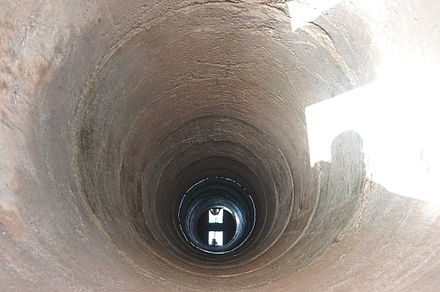The quest for reaching new depths has driven humans to undertake remarkable engineering feats. One such endeavor is the excavation of deep wells, allowing us to access groundwater and explore the secrets hidden beneath the surface. In this blog post, we will embark on a journey to discover the world’s deepest dug well, unraveling the fascinating story behind its construction, the challenges faced by the diggers, and the significance of these deep wells in our modern world.
I. The Fascination with Deep Wells Throughout history, humans have sought to access groundwater for various purposes, including drinking water, irrigation, and industrial use. Deep wells provide a reliable source of water and often serve as a testament to human ingenuity and perseverance. The exploration and construction of deep wells have led to important discoveries and advancements in hydrogeology.
II. The World’s Deepest Dug Well: Kola Superdeep Borehole The Kola Superdeep Borehole, located in Russia, holds the record for being the deepest dug well in the world. It was an ambitious scientific project aimed at exploring the Earth’s crust and studying its composition. The drilling began in 1970 and reached a depth of 7.5 miles (12 kilometers) before coming to a halt in 1992.
III. Challenges of Digging Deep Wells Excavating deep wells presents numerous challenges. As the depth increases, so does the temperature and pressure underground. Drillers must contend with extreme temperatures, high-pressure conditions, and geological complexities. In the case of the Kola Superdeep Borehole, the rock formations encountered at great depths were unexpectedly hard, slowing down progress and adding to the difficulties faced by the drilling team.
IV. Scientific Discoveries and Insights The Kola Superdeep Borehole provided valuable scientific insights into the Earth’s composition and structure. It allowed scientists to study the crust and collect rock samples from unprecedented depths. The project yielded new knowledge about the geology, seismology, and thermal properties of the Earth’s interior. Although the drilling did not reach the intended target of the Earth’s mantle, it paved the way for further scientific research and exploration.
V. Deep Wells and Groundwater Exploration Deep wells play a crucial role in accessing groundwater resources. They provide a reliable water supply in areas where shallow wells or surface water sources are inadequate. Deep wells are often equipped with pumps and infrastructure to extract and distribute groundwater for various purposes. They contribute to sustainable water management and ensure the availability of clean water for communities and industries.
VI. The Significance of Deep Wells Today Deep wells continue to be essential in meeting water demands worldwide. They play a vital role in supplying water to remote areas, supporting agricultural activities, and serving as a backup water source during droughts or emergencies. Furthermore, ongoing research and technological advancements in drilling techniques enhance our understanding of groundwater resources and improve the efficiency and sustainability of deep well construction.
Conclusion: The world’s deepest dug well, the Kola Superdeep Borehole, stands as a testament to human curiosity and the desire to explore the unknown. While the drilling project did not achieve its ultimate goal, it contributed valuable scientific knowledge and opened new doors for geological research. Deep wells, in general, remain critical in accessing groundwater resources and meeting water needs globally. As we continue to delve into the depths, deep wells will play an integral role in sustaining our water supply and unraveling the mysteries beneath the Earth’s surface.



















Add Comment